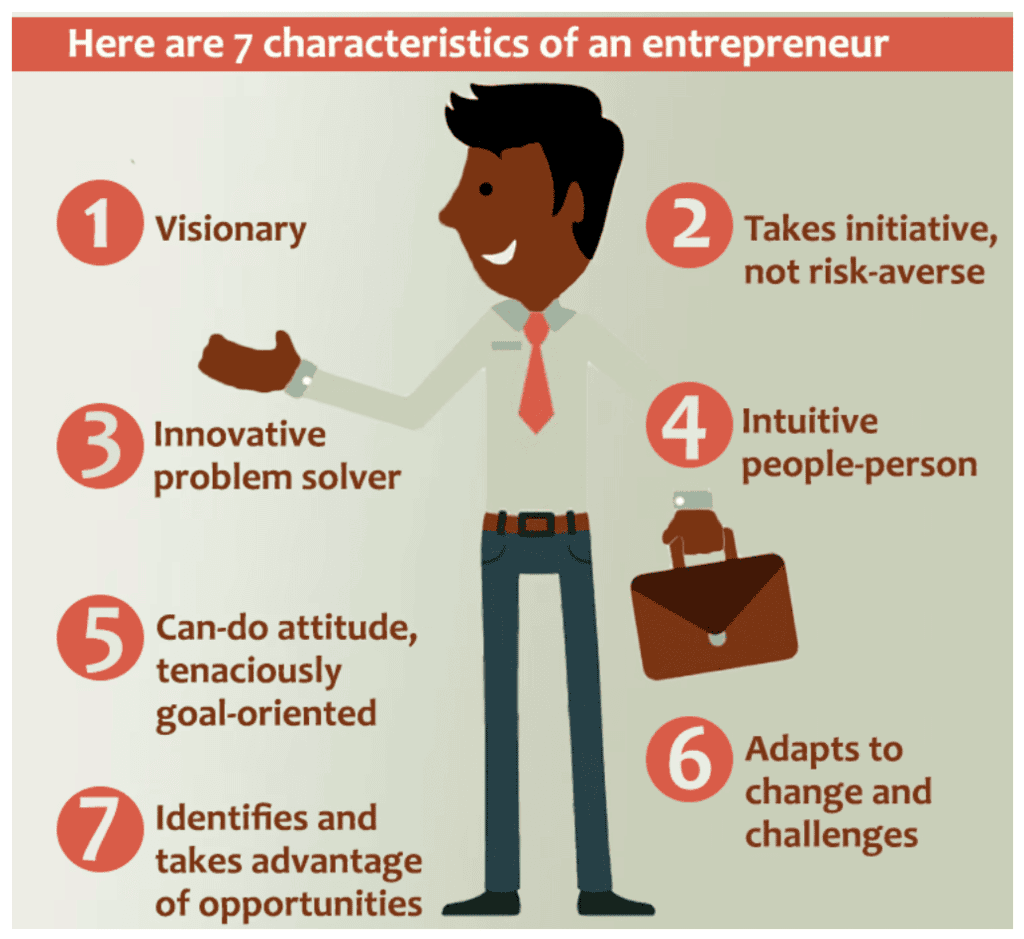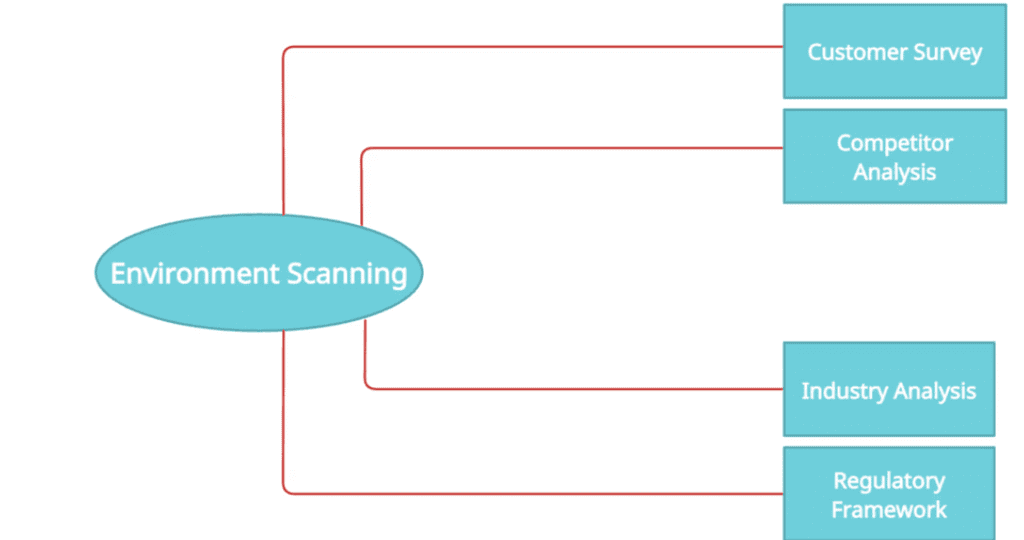Revision Notes- Entrepreneurial Opportunities | Entrepreneurship Class 12 - Commerce PDF Download
Who are Entrepreneurs?
- Entrepreneurs are individuals who identify business opportunities.
- They gather the necessary resources to capitalize on these opportunities and take action to ensure success.
- The journey of entrepreneurship starts with identifying business opportunities.

What is the Concept of Entrepreneurship?
- Entrepreneurship involves creating, organizing, and managing a business while handling uncertainties to make a profit.
- According to Peter F. Drucker, entrepreneurs are constantly seeking opportunities.
- A successful entrepreneur identifies business opportunities and takes action to produce and sell goods/services to maximize profits.
- In economics, entrepreneurship involves land, labor, natural resources, and capital to lead to profit.
- Entrepreneurs are visionaries who influence customers, partners, employees, and suppliers to recognize and support business opportunities.
What Constitutes a Business Opportunity?
- A business opportunity is an economic idea that can be turned into a business and generate profit.
- Before choosing an opportunity, entrepreneurs need to ensure:
- There is a strong market for the product.
- The return on investment is attractive enough.
Types of Entrepreneurship
Small Business Entrepreneurship:
- Examples: Hairdressers, grocery stores, travel agents, carpenters, plumbers, etc.
- Businesses run by entrepreneurs or family members.
- The goal is to earn enough profit to support the family, not large-scale growth.
- Funding: Small business loans or loans from family and friends.
Scalable Startup Entrepreneurship:
- Entrepreneurs start businesses with a vision to change the world.
- Attract investors and hire top employees.
- Requires venture capital for growth and experimentation.
Large Company Entrepreneurship:
- Large companies sustain growth by introducing new products or services.
- They innovate to adapt to changing technology, customer preferences, or competition.
- They may acquire innovative enterprises or develop products internally.
Social Entrepreneurship:
- Focuses on solving social needs and problems rather than making profits.
- The goal is to work for society and create positive change.
Characteristics of Entrepreneurship
- Ability to Take Risks: Entrepreneurs must be willing to take risks and face potential failures.
- Innovation: Entrepreneurs need to create new ideas, products, or processes to stay competitive.
- Visionary and Leadership Quality: A successful entrepreneur must have a clear vision and strong leadership skills to guide employees toward success.
- Open-Mindedness: Entrepreneurs must recognize opportunities in every circumstance, such as Paytm capitalizing on the demonetization period.
- Flexibility: Entrepreneurs should be adaptable to change and ready to adjust products or services as needed.
- Knowledge of Product: Entrepreneurs should be knowledgeable about their products and current market trends.
Importance of Entrepreneurship
- Creation of Employment: Entrepreneurship generates a variety of job opportunities across different skill levels, boosting employment.
- Innovation: Entrepreneurship fosters innovation, leading to new and improved products, processes, and services, thereby raising living standards.
- Impact on Society and Community Development: Entrepreneurship strengthens society by providing jobs, driving social changes, and improving living conditions (e.g., education, sanitation, housing).
- Increase in Standard of Living: Entrepreneurship generates wealth and economic activity, improving the consumption of goods and services.
- Supports Research and Development: Entrepreneurs collaborate with research institutions, driving innovation and economic growth.
- Development of New Industries: Entrepreneurship creates new industries, contributing to economic diversity and resilience.
What is Sensing Entrepreneurial Opportunities?
Sensing entrepreneurial opportunities involves generating ideas for new businesses.
Opportunities can arise from various sources:
- Problem-Solving: Identifying a market problem and having the means to solve it can lead to a business idea.
- Market Gaps: Seeing a product or service in one market that is unavailable in another can inspire a local business opportunity.
- Listening to Customers: Paying attention to customers’ needs, preferences, timing, and pricing helps identify innovative business ideas.
- Franchises: Franchises offer opportunities to either buy rights or collaborate with others to implement a business concept.
- Unmet Needs and Changes: Opportunities often stem from unmet needs, or shifts in social, legal, or technological contexts.
Key Factors in Recognizing Entrepreneurial Opportunities:
- Ability to identify and develop ideas that can be commercialized.
- Capacity to gather information from various sources.
- Strong vision and creativity.
Sources for Emerging Business Ideas:
- Problems: Identifying problems can lead to solutions that evolve into business opportunities.
- Change: Changes in social, legal, or technological environments can create new possibilities.
- Inventions: New products or services can open fresh business opportunities.
- Competition: Rivalry can inspire new and improved ideas.
- Innovation: Creating valuable new products or processes can improve existing offerings.
Entrepreneurs are skilled at identifying opportunities, synthesizing information, and recognizing patterns others may overlook. They inspire support for their ideas from customers, partners, employees, and suppliers.
What is Environmental Scanning?
Environmental scanning involves gathering information about both internal and external factors that may impact an organization.
Purpose: To help management determine the future direction of the organization and refine business ideas.

Steps in Environmental Scanning:
- Customer Survey:
- Understand who the customers are and what they want.
- Determine when and at what price customers are willing to buy.
- Assess whether a real market exists for the proposed product or service.
- Competitor Analysis:
- Identify existing competitors and understand what they offer.
- Determine unmet needs and price points to differentiate your business.
- Industry Analysis:
- Understand the attractiveness of the industry.
- Analyze growth trends, supplier power, the number of buyers, substitutes, and barriers to entry.
- This helps determine if the industry is worth entering.
- Regulatory Framework:
- Investigate industry-specific regulations that could affect the business.
- For example, the life sciences sector has strict regulations; in India, the Food Processing Organization (FPO) is a key regulator.
Purpose of Environmental Scanning:
- It helps determine what product or service is worth launching in the market.
- It provides insights into potential risks and opportunities, aiding entrepreneurs in managing them as they start a business.
Problem Identification
Importance: Identifying potential risks in the market is essential when sensing entrepreneurial opportunities. Risks are categorized into company risks and financial risks.
Company Risks
- Entrepreneur's Objective: Entrepreneurs need the determination not just to start, but to grow their business. Only a few entrepreneurs, like Bill Gates or Steve Jobs, can successfully scale their companies.
- Technology Risk: Concerns about how long the technology used by the business will stay relevant and cutting-edge.
- Product Risk: The risk of not being able to manufacture or deliver a product that works as expected.
- Market Risk: Uncertainties about customer demand and competition. It's crucial to create barriers to prevent competitors from imitating your success too quickly.
- Industry Risk: Risks related to the industry, such as raw material supply issues or changes in regulations.
Financial Risks
- Raising the Money: Securing funding for the business, both initially and for future expansions. The business proposal must appeal to banks and financial institutions.
- Meeting Investor's Expectations: Fulfilling investors’ expectations for returns to secure future funding.
Spotting Trends
- Entrepreneurs must monitor market demographics (such as consumers' age groups and preferences) to stay on top of evolving trends.
- Trend Observation: An example can be seen in the auto industry, where safety features like gear locks, central locking systems, and alarms were developed to address the growing demand for car security.
- Constant monitoring of consumer needs and product trends is essential for sustained business success.
Creativity and Innovation
Creativity is the process of generating new ideas or transforming existing ones into something valuable. It involves combining, changing, or repurposing ideas to create new products with a value proposition. Example: A creative idea could involve tweaking an existing product to improve its function or appeal.
Innovation is the implementation of creative ideas to enhance or modify a product or service to better meet customers' needs. Example: Laptops were innovated from desktop computers, adding portability and functionality.
- Entrepreneurs are distinguished by their ability to continuously evolve products or services through new and innovative ideas.
- Key innovators like Bill Gates (Microsoft), Graham Bell (Telephone), and the Wright Brothers (Aeroplane) exemplify how creativity leads to groundbreaking innovations.
Selecting the Right Opportunity
- After evaluating all available business ideas through risk analysis, customer response, and environmental scanning, entrepreneurs need to select the idea with the best potential.
- Entrepreneurs should conduct a cost-benefit analysis to determine which product or service will give the highest return for the least cost.
- Additional factors to consider include future prospects and the availability of resources to pursue the chosen opportunity effectively.
|
19 videos|103 docs|12 tests
|
FAQs on Revision Notes- Entrepreneurial Opportunities - Entrepreneurship Class 12 - Commerce
| 1. What are the key steps in scanning the environment for entrepreneurial opportunities? |  |
| 2. How can I identify the right product opportunity in a competitive market? |  |
| 3. What role does market research play in selecting the right entrepreneurial opportunity? |  |
| 4. What are some common mistakes entrepreneurs make when scanning for opportunities? |  |
| 5. How can networking help in identifying entrepreneurial opportunities? |  |





















